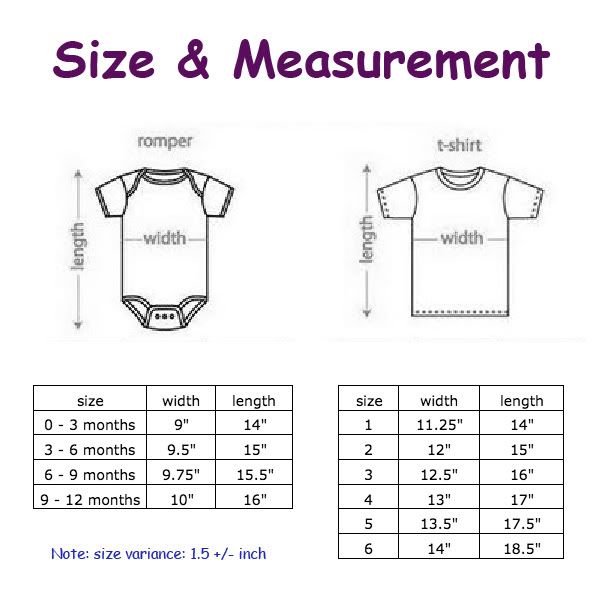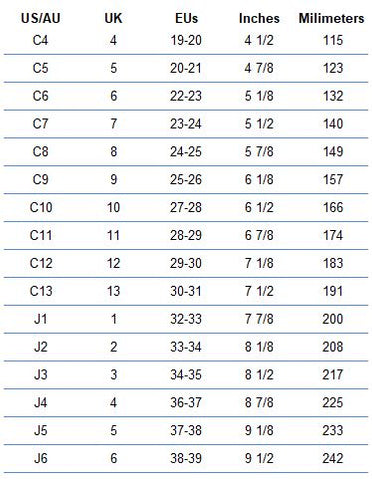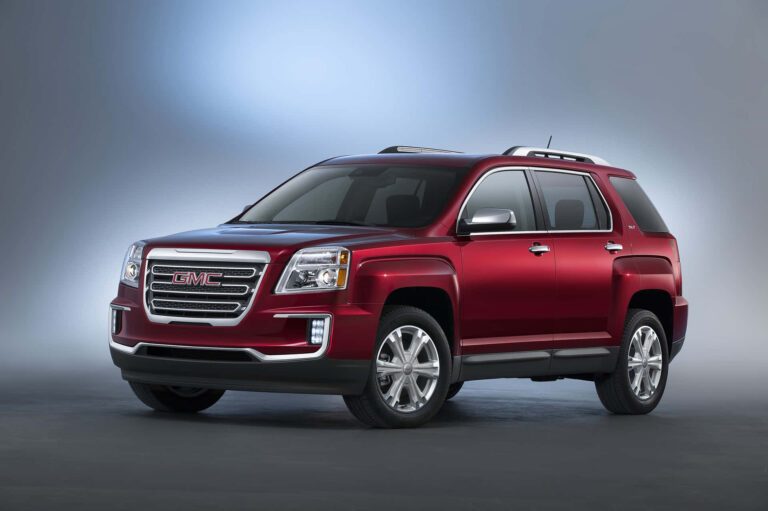What Size Of Canopy For A Chevy Silverado
What Size Of Canopy For A Chevy Silverado cars.truckstrend.com
Choosing the right canopy for your Chevy Silverado is more than just a matter of aesthetics; it’s a critical decision that impacts functionality, security, fuel efficiency, and even the resale value of your truck. Often referred to as a truck cap, topper, or shell, a canopy transforms your open truck bed into a secure, weather-protected storage space, or even a comfortable sleeping area. However, the vast array of Silverado models, bed lengths, and canopy styles can make selecting the perfect fit a daunting task. This comprehensive guide will walk you through everything you need to know to confidently choose the ideal canopy size for your Chevy Silverado, ensuring it meets your specific needs and seamlessly integrates with your truck.
Understanding Your Silverado’s Bed Dimensions: The First Step
What Size Of Canopy For A Chevy Silverado
The fundamental prerequisite for selecting any truck canopy is an accurate understanding of your Silverado’s bed dimensions. Chevy Silverados, across their various generations and configurations, come with different bed lengths. A canopy designed for one bed length will simply not fit another.
Common Silverado Bed Lengths:
- Short Bed: Typically around 5 feet 8 inches (5’8" or 69.3 inches). This bed length is most commonly found on Crew Cab Silverados, offering a balance between passenger space and cargo capacity.
- Standard Bed: Generally around 6 feet 6 inches (6’6" or 78.7 inches). This is a versatile bed length available on Extended Cab and some Crew Cab models, providing ample space for most hauling needs.
- Long Bed: Approximately 8 feet (8’0" or 97.6 inches). The longest option, primarily found on Regular Cab and some Extended Cab Silverados, designed for maximum cargo volume and heavy-duty work.
How to Measure Your Truck Bed Accurately:

- Length: Measure from the inside edge of the bulkhead (the wall closest to the cab) to the inside edge of the tailgate, with the tailgate closed. Use a steel tape measure for precision.
- Width: Measure the inside width of the bed at two points: near the cab and near the tailgate. While Silverado beds are generally consistent in width, slight variations can occur, and canopy manufacturers design for these specific dimensions. Also, measure the width across the top of the bed rails.
- Height: Measure from the top of your bed rails down to the bed floor. This isn’t usually critical for standard canopy fitment, but it helps visualize interior space. The more critical height measurement for canopy fit is from the bottom of the canopy’s sealing surface to its peak (internal clearance) and the overall exterior height once installed.

Important Note on Model Years: Truck bed dimensions can vary slightly between different generations of the Chevy Silverado (e.g., GMT800, GMT900, K2XX, T1XX platforms). Always specify your exact model year when researching or purchasing a canopy, as a canopy for a 2010 Silverado might not fit a 2020 model perfectly, even if they share the same nominal bed length.
Types of Canopies and Their Fit
Canopies aren’t one-size-fits-all in terms of design or height. Your intended use will heavily influence the style you choose.

Cab-High Canopies: These are designed to be flush with the height of your Silverado’s cab roof.
- Benefits: Maintain the truck’s original sleek lines, offer the most aerodynamic profile (potentially better fuel efficiency), and are ideal for general cargo protection without adding excessive height.
- Best For: Everyday use, securing tools, camping gear, luggage, or light recreational items.
-
Mid-Rise Canopies: Slightly taller than the cab, usually by 3 to 6 inches.
- Benefits: Provide noticeably more interior cargo volume than cab-high models, allowing for taller items like coolers, bikes (with front wheels removed), or more comfortable sleeping space. They still offer a relatively streamlined appearance.
- Best For: Weekend adventurers, light contractors, or those needing a bit more vertical storage without going excessively tall.
-
High-Rise Canopies: Significantly taller than the cab, sometimes by a foot or more.
- Benefits: Maximize cargo volume, ideal for accommodating very tall items, creating spacious camping setups, or serving as mobile workshops.
- Best For: Serious campers, contractors with bulky equipment, or individuals who prioritize maximum enclosed space.
-
Commercial/Work Canopies: Built for durability and specific utility, often made from heavy-gauge aluminum or reinforced fiberglass. They usually feature side-access doors, shelving, and heavy-duty roof racks.
- Benefits: Unparalleled durability, secure and organized storage for tools and equipment, customizable interiors.
- Best For: Tradespeople, mobile service providers, or anyone needing a robust, highly functional workspace.
Key Considerations Beyond Length and Type
Once you’ve identified the correct bed length and preferred style, several other factors come into play:
- Width: While bed lengths vary more, bed widths are generally more consistent within a Silverado generation. However, a canopy must match the exact width of your bed rails to ensure a watertight seal and proper clamping. Manufacturers design canopies to fit specific truck models precisely.
- Interior vs. Exterior Height: Understand the usable internal height for your cargo and the overall exterior height your Silverado will have with the canopy. This is crucial for clearing garage doors, low bridges, or drive-thrus.
- Weight: Canopies add weight to your truck, impacting its payload capacity and potentially fuel economy. Fiberglass canopies typically weigh 150-250 lbs, while aluminum can be lighter (100-200 lbs) and heavy-duty commercial caps can exceed 300 lbs. Always check your Silverado’s Gross Vehicle Weight Rating (GVWR) and payload capacity.
- Material:
- Fiberglass: Most common, offers smooth, paintable surfaces for a factory-matched look. Durable, good insulation.
- Aluminum: Lighter, more utilitarian appearance, often more affordable. Excellent for work applications due to strength-to-weight ratio.
- Carbon Fiber: Lightweight and extremely strong, but significantly more expensive. Rare for standard canopies.
- Features and Accessories: Modern canopies offer a plethora of options:
- Windows: Sliding, pop-out, screened, dark tint.
- Lighting: Interior LED lights.
- Roof Racks: For carrying bikes, kayaks, lumber, etc.
- Interior Finish: Carpeted headliners for insulation and sound dampening.
- Security: Power locks, remote entry.
- Ventilation: For pets or air circulation.
- Specialty Options: Toolboxes, shelving, pet screens, bedrugs.
Finding the Right Fit: A Step-by-Step Guide
- Identify Your Silverado’s Exact Model: Note the year, make, model, trim (e.g., 2022 Chevy Silverado 1500 LT Crew Cab Short Bed).
- Measure Your Truck Bed Precisely: As detailed above, measure length, width, and rail height. Double-check your measurements.
- Consult Manufacturer Specifications: Look up your specific Silverado model year and configuration online or in your owner’s manual for factory bed dimensions. Cross-reference your measurements.
- Research Canopy Manufacturers: Leading brands include ARE, Leer, SnugTop, ATC, TruckGear by LINE-X, and others. Visit their websites; most have "Build Your Own" or "Fit My Truck" tools.
- Verify Compatibility: Input your truck’s exact details into the manufacturer’s configurator. This will show you which models and sizes are compatible.
- Consider Your Primary Use Case: Will it be for camping, hauling tools, protecting groceries, or enhancing aesthetics? This will guide your choice of canopy type (cab-high, mid-rise, high-rise) and features.
- Visit a Local Dealer: For the most accurate advice, visit an authorized canopy dealer. They have experience fitting canopies to countless Silverados and can physically verify measurements and show you options. Professional installation is highly recommended to ensure a secure, watertight fit.
Benefits of a Properly Sized Canopy
- Superior Protection: Keeps your cargo safe from weather elements (rain, snow, sun) and theft.
- Increased Secure Storage: Transforms your open bed into a large, lockable trunk.
- Improved Fuel Efficiency (Potentially): Aerodynamic cab-high designs can sometimes reduce drag, leading to marginal fuel savings.
- Enhanced Aesthetics: A perfectly matched and fitted canopy looks like an integrated part of your truck, rather than an afterthought.
- Versatility: Expands your truck’s utility, allowing for camping, secure tool transport, or even a pet-friendly space.
- Maintained Resale Value: A well-maintained, properly fitted canopy can be an attractive feature for future buyers.
Challenges and Solutions
- Mismatched Fit: The most common issue. A canopy that’s too long, too short, or too wide will either not fit, leave gaps, or damage your truck.
- Solution: Meticulous measurement, cross-referencing with manufacturer specs, and consulting with a reputable dealer.
- Weight Overload: Choosing a canopy that’s too heavy for your truck’s payload capacity.
- Solution: Check your Silverado’s GVWR and payload. Opt for lighter materials like aluminum if payload is a concern.
- Installation Issues: Improper installation can lead to leaks, canopy damage, or even detachment.
- Solution: Always opt for professional installation, especially for new canopies. They have the right tools and expertise for proper sealing and securing.
- Cost: Canopies are a significant investment.
- Solution: Budget accordingly, compare prices from different manufacturers and dealers, and consider used options if budget is tight (but verify condition and fit carefully).
Estimated Canopy Price Table for Chevy Silverado
Please note: These are estimated price ranges. Actual prices will vary significantly based on brand (e.g., Leer, ARE, SnugTop), specific features, material quality, finish (e.g., custom paint match), installation costs, and geographical location.
| Canopy Type | Typical Silverado Bed Lengths | Key Features (Examples) | Estimated Price Range (USD) |
|---|---|---|---|
| Cab-High Fiberglass | 5’8", 6’6", 8’0" | Painted to match, sliding side windows, rear door, interior light, carpeted headliner | $2,000 – $3,500 |
| Mid-Rise Fiberglass | 5’8", 6’6", 8’0" | Painted to match, sliding side windows, interior light, roof rack ready, higher clearance | $2,500 – $4,000 |
| High-Rise Fiberglass | 6’6", 8’0" | Painted to match, large interior volume, often with larger windows or side access options | $2,800 – $4,500+ |
| Cab-High Aluminum | 5’8", 6’6", 8’0" | Mill finish or basic paint, sliding windows, utilitarian design, lighter weight | $1,500 – $2,800 |
| Commercial/Work (Aluminum/Fiberglass) | 6’6", 8’0" | Heavy-duty construction, side access doors, internal shelving/drawers, robust roof rack | $3,000 – $6,000+ |
| Premium Fiberglass (Any Height) | 5’8", 6’6", 8’0" | Keyless entry, power locks, frameless windows, extreme custom paint, specialized interior | $3,500 – $6,000+ |
Prices are estimates and do not typically include taxes, delivery, or complex accessory installations.
Frequently Asked Questions (FAQ)
Q1: Can I use a canopy from an older Silverado on a newer one?
A1: It’s highly unlikely to be a perfect fit. Truck bed dimensions, rail cap designs, and tailgate shapes change significantly between generations and sometimes even within a generation (e.g., "classic" vs. "new body style"). Always verify exact fitment for your specific model year.
Q2: Do canopies affect gas mileage?
A2: A well-designed, cab-high canopy can sometimes improve fuel efficiency by creating a more aerodynamic profile over the open bed. However, a taller or heavier canopy can negate these gains, and adding significant weight will always impact mileage negatively.
Q3: How do I measure my truck bed for a canopy?
A3: Measure the inside length from the bulkhead to the closed tailgate. Measure the inside width at both the cab and tailgate ends. Also, measure the width across the top of the bed rails. Always double-check measurements.
Q4: Is professional installation necessary?
A4: While some DIY enthusiasts install their own, professional installation is strongly recommended. Dealers ensure proper fit, a watertight seal, correct electrical connections (for lights/locks), and secure clamping, which are crucial for safety and longevity.
Q5: How much does a canopy typically weigh?
A5: Fiberglass canopies usually weigh between 150 to 250 pounds, depending on size and features. Aluminum canopies are often lighter, ranging from 100 to 200 pounds. Heavy-duty commercial caps can exceed 300 pounds.
Q6: Can I paint my canopy to match my truck?
A6: Yes, fiberglass canopies are typically ordered "paint-to-match" using your truck’s paint code to ensure a seamless factory look. Aluminum canopies can also be painted but may not achieve the same smooth finish.
Q7: Are used canopies a good idea?
A7: Used canopies can save money, but proceed with caution. Ensure it’s for your exact truck model year and bed length. Inspect thoroughly for cracks, damage, warped seals, and missing parts. Factor in potential costs for new seals, clamps, and paint if needed.
Conclusion
Selecting the right canopy for your Chevy Silverado is a decision that balances practicality, budget, and personal preference. By meticulously measuring your truck bed, understanding the different canopy types, and considering your specific needs, you can narrow down the options to find the perfect fit. Whether you prioritize sleek aerodynamics, maximum cargo volume, or robust utility, the market offers a diverse range of canopies to transform your Silverado into an even more versatile and capable vehicle. Always prioritize accurate measurements and, when in doubt, consult with experienced canopy dealers to ensure your investment serves you well for years to come.




